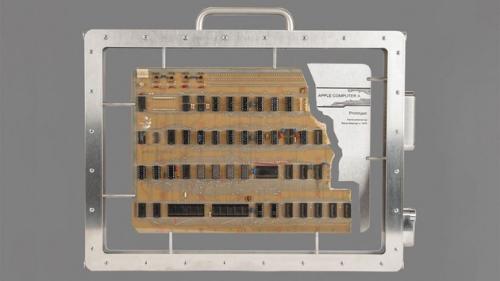your current location is:Home > investHomeinvest
On the eve of the IPO, why did Arm take the risk with Qualcomm in court?

British chip design company Arm, on the eve of its highly anticipated IPO, chose to take a risk: suing its big customer. However, Arm may have no choice but to resort to the law as it concerns how to distribute the revenue generated by its technology in new markets.
The lawsuit was filed in the U.S. District Court for the District of Delaware in late August. Arm in the indictment alleges that mobile chip technology company Qualcomm used Arm's intellectual property without a license. The case stems from Qualcomm's $1.4 billion acquisition of startup Nuvia last year, a chip design company based on the Arm architecture.
The acquisition underscores the technical interdependence of Arm and Qualcomm: Both companies are now looking outside the already mature smartphone industry in new markets where they can continue to expand. Nuvia's first design was an Arm-based chip for data centers, but Qualcomm said it hopes to use the same design to break into other new markets that haven't yet widely adopted Arm technology, such as laptops and cars.
Arm is reliant on clients such as Qualcomm to bring technology to new markets because they "need a growth story" to attract investors for an IPO that starts next year, said Stacy Rasgon, an analyst at Bernstein Research. "If you can only tell the story of the smartphone, it will not perform well."
However, despite months of negotiations, Arm and Qualcomm have not been able to agree on how Qualcomm will use Nuvia's technology. So, Arm chose to go to court. The company claimed that the licenses they had licensed to Nuvia were not transferable, and asked Qualcomm to destroy all intellectual property it acquired through the acquisition.
Qualcomm believes that the licensing agreement they signed with Arm a few years ago can cover Nuvia's technology, so it applied to the court to immediately dismiss the case.
The dispute sheds light on the intricacies of Arm's licensing arrangements -- in some cases, even putting Arm in direct competition with customers. In the process, some of Arm's major customers chose to increase the proportion of internal chip design, hoping to highlight the differentiation of their own equipment, thus posing a challenge to Arm's business model.
Arm has achieved great success in mobile devices with low-power chip designs. Last year, Qualcomm became the largest seller of Arm-based chips in mobile devices, according to market research firm Strategy Analytics. Qualcomm alone has contributed $12 billion to an estimated $35.1 billion in Arm-based chips used in smartphones, laptops and tablets. It is followed by Apple, the tech giant that designs chips for MacBooks and iPads based on the Arm architecture, with $11 billion in sales.
Arm's licensing fees come from two licenses. One, called technology licensing, covers the computing cores based on the Arm architecture, the central "brains" of computer processors. Qualcomm would buy Arm's Cortex cores and use them in Snapdragon smartphone processors.
Arm's other license covers only its underlying chip architecture. Nuvia has obtained this license, and there are about a dozen similar companies, all of which design their own computing cores based on Arm's architecture.
Arm negotiates licensing terms with each customer on a case-by-case basis, and does not disclose licensing rates, but rates under technology licensing models are usually higher because Arm needs to put in extra work to design computing cores. Last year, Arm's unlicensed revenue -- the upfront fees it collects when signing new licensing deals -- rose 61 percent. But the company's $1.54 billion in licensing revenue still accounted for 58% of revenue, up 20% year over year.
Strategy Analytics analyst Sravan Kundojjala estimates that Qualcomm sells about 350 million to 400 million chipsets a year that use Arm's cores, each paying Arm about 80 cents in fees. But using Nuvia's "Phoenix" cores instead of Arm's Cortex cores could potentially save 40% to 50% of licensing fees.
Qualcomm said in response to the lawsuit late last month that it could use Nuvia's technology to compete directly with Arm, as well as other companies that use Arm's patents and use Intel's x86 chip architecture. Qualcomm also said it expects to use Nuvia's core in the crucial smartphone market, which happens to be the largest piece of Arm's existing business.
Qualcomm is not alone in giving its products more advantages by controlling more of the chip design process. Apple is also licensing its own computing cores based on Arm's architecture, and they surprised the tech industry with their first M1 chips two years ago.
Nvidia, another big Arm customer, agreed to pay $750 million for a broad license to Arm technology when it negotiated a 2020 deal. Architectural licensing was included in the deal, but Nvidia recently said it chose to use Arm's Neoverse cores in its latest data center chips.
With top chip companies investing more resources in developing their own computing cores based on an architectural licensing model, "Arm's licensing fees through some customers appear to be lower," Rasgon said. "They're likely to have many customers moving to a royalty model," said Rasgon. But the value of this model is greatly discounted.”
The shift could force the market to rethink Arm's charging model for intellectual property, added TECHnalysis Research analyst Bob O'Donnell. "Some people think that Arm has not charged high enough in the past, so the architecture licensing fee should be increased," he said. Condogala said that due to Arm's high customer concentration, about one-fifth of customers contributed 80% of licensing fees, resulting in more pressure on the company's revenue.
Still, it's not uncommon to go to court over important intellectual property issues before an IPO. Yahoo sued Google for infringing a search advertising patent it owned before its 2004 IPO. The two sides eventually reached a settlement. For Arm, the pressure now is on how to demonstrate to potential investors how they can maintain decent licensing rates while looking ahead to a new phase of growth.
related articles
Article Comments (0)
- This article has not received comments yet, hurry up and grab the first frame~













